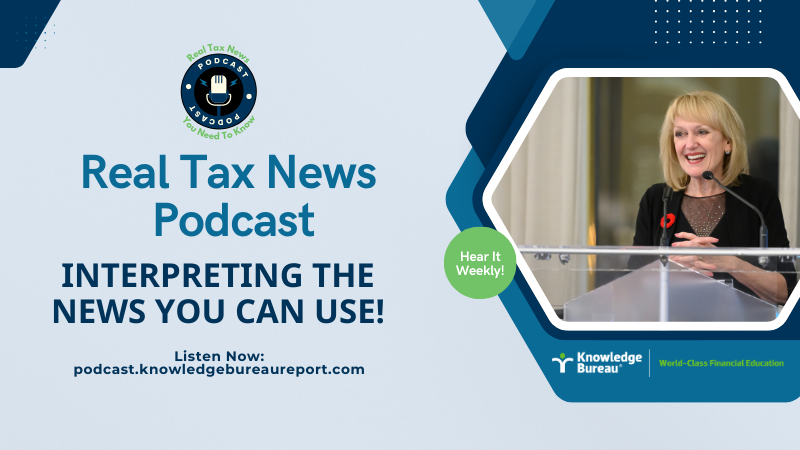Last updated: June 10 2025
Why Provincial Debt in Canada Matters

Geoff Currier
Provincial debt is rising fast — and that should concern every Canadian taxpayer and the professionals who serve them. With every dollar of debt comes an interest payment, but no added value in services. If governments were people, many would be seeking help from a credit counsellor. So why does this matter to your clients — and to you as a tax or financial professional? Because government debt affects interest rates, taxation, and economic growth, all of which impact tax and financial planning for individuals and businesses.
If you’re a leader in helping clients make financial decisions, please take a closer look here and be sure to review Knowledge Bureau’s Special Report on this year’s Federal/Provincial budgets available to all KBR subscribers and included with all student registrations.
Canada’s Provincial Debt Load is Growing: Statistics Canada states “the consolidated provincial, territorial and local governments (PTLGs) posted a deficit of $21.5 billion in 2023, following a $12.5 billion surplus the year before.”
According to a Fraser Institute report in January of 2024, every province has increased its debt. Alberta has seen the greatest hike in red ink, moving from a surplus of close to $50 billion dollars in 2007-08 to a debt of over$ 90 billion in 2023-24. That represents a change of 182%. Both B.C. and Manitoba increased their debt by more than 122% for that same period.
(This is especially noteworthy in the case of Manitoba since it has been a consistent recipient of federal transfer payments to help with its health care and education costs and still continues to rack up deficits.)
Saskatchewan (82.2%) and Ontario (84.9%) also saw large rises in debt. Nova Scotia boasts the best track record of any province for that same time span with an increase of 14.7%.
What’s the Cost to Taxpayers? In real dollars it looks like this: Newfoundlanders owe $32,562 and Ontarians are $27,091 in the red. The numbers go down from province to province but every one of us owes money because of our provincial governments.
Over this same time span, federal debt has jumped more than 83%. That translates into nearly $34,000 of debt for every Canadian.
Debt as Share of the Economy: According to the Fraser Report “Provincial net debt as a share of the economy has increased over nine percentage points over the last 16 years, from 20.3% to 29.7%. Overall, the combined federal-provincial debt-to-GDP ratio is projected to climb from 53.1% in 2007/08 to 76.2% in 2023/24.”
It goes on to say “Alberta (has had) the largest percentage point increase in this ratio, which is projected to grow from 13.4% to 9.0%—an increase of 22.4 percentage points. Manitoba is projected to have the second largest percentage point increase in its ratio, rising by 16.1 points.”
Debt and GDP: If we examine the combined federal and provincial debt in terms of debt to GDP ratio, the numbers become even more disturbing.
Nova Scotia 96.8%
Quebec 93.1%
Manitoba 92%
New Brunswick 87.8%
Ontario, PEI & Newfoundland & labrador are all above 86%
Alberta 42.9% has the lowest ratio
The final tally at the end of the current fiscal year will paint a bleak picture as almost every provincial and territorial government is forecasting a deficit and, as we’ve reported here before, some are predicting record deficits.
Mixed Review from the PBO: Canada’s Parliamentary Budget Officer, Yves Giroux, paints a somewhat more optimistic picture. In his office’s Fiscal Sustainability Report 2024, Giroux states “For the subnational government sector, which includes provincial-territorial, local and Indigenous governments, current fiscal policy is sustainable over the long term We estimate that current fiscal policy in five provinces is sustainable over the long term: Quebec, Saskatchewan, Nova Scotia, Ontario and Alberta. With the exception of Alberta, we estimate that these provinces have fiscal room to increase spending or reduce taxes, ranging from 1.4 per cent of provincial GDP in Quebec to 0.3 per cent of provincial GDP in Ontario.”
The PBO optimism is not unlimited, however. “All other provinces and territories have current fiscal policies that are not sustainable over the long term. Based on our estimates, the amount of policy action required to achieve fiscal sustainability ranges from 0.5 per cent of provincial GDP in Newfoundland and Labrador to 5.9 per cent of territorial GDP for the territories.”
The Value of Reducing Debt: There are strong arguments in favour of reducing government debt. The first is during times of rising interest rates, the cost of borrowing goes up and private investment tends to slow. The second is the interest which must be paid on government debt. Traditionally governments in Canada have increased taxes to cover the costs, which also slows economic growth.
But perhaps the most important reason is this: the more money that is directed to interest payments, the fewer services governments can provide. StatsCan points out that the combined interest for all levels of government “increased by $17.2 billion from 2022 to 2023 which is an increase of 22.5% for a total expenditure of $93.8 billion. That’s almost $94 billion for which the Canadian taxpayer received nothing. That number will be significantly higher by the end of the current fiscal year.
The Bottom Line: An aging population and U.S. tariffs have applied pressure to provincial and territorial budgets this year although some are aiming to return to balanced budgets by the end of the decade. It appears that, for the short term at least, residents of all Canadian provinces can not expect to see reductions in the debt they are servicing. It’s a growing debt that will be bequeathed to subsequent generations, whose taxes dollars will need to cover it.
For tax and financial advisors, this may mean helping clients:
- Plan for a higher-tax environment
- Stress-test financial plans for slower growth scenarios
- Incorporate public policy risk into wealth and retirement planning
See the StatsCan report on the 4th Quarter of 2024 here:
https://www150.statcan.gc.ca/n1/daily-quotidien/250327/dq250327c-eng.htm
Read the full PBO report here:
Here’s the Fraser Institute Report
https://www.fraserinstitute.org/sites/default/files/growing-debt-burden-for-canadians-2024.pdf
Stay tuned weekly to Knowledge Bureau Report for continuing coverage of breaking tax and economic news and tune in to a new podcast- Real Tax News You Can Use with Evelyn Jacks: podcast@knowledgebureaureport.com

